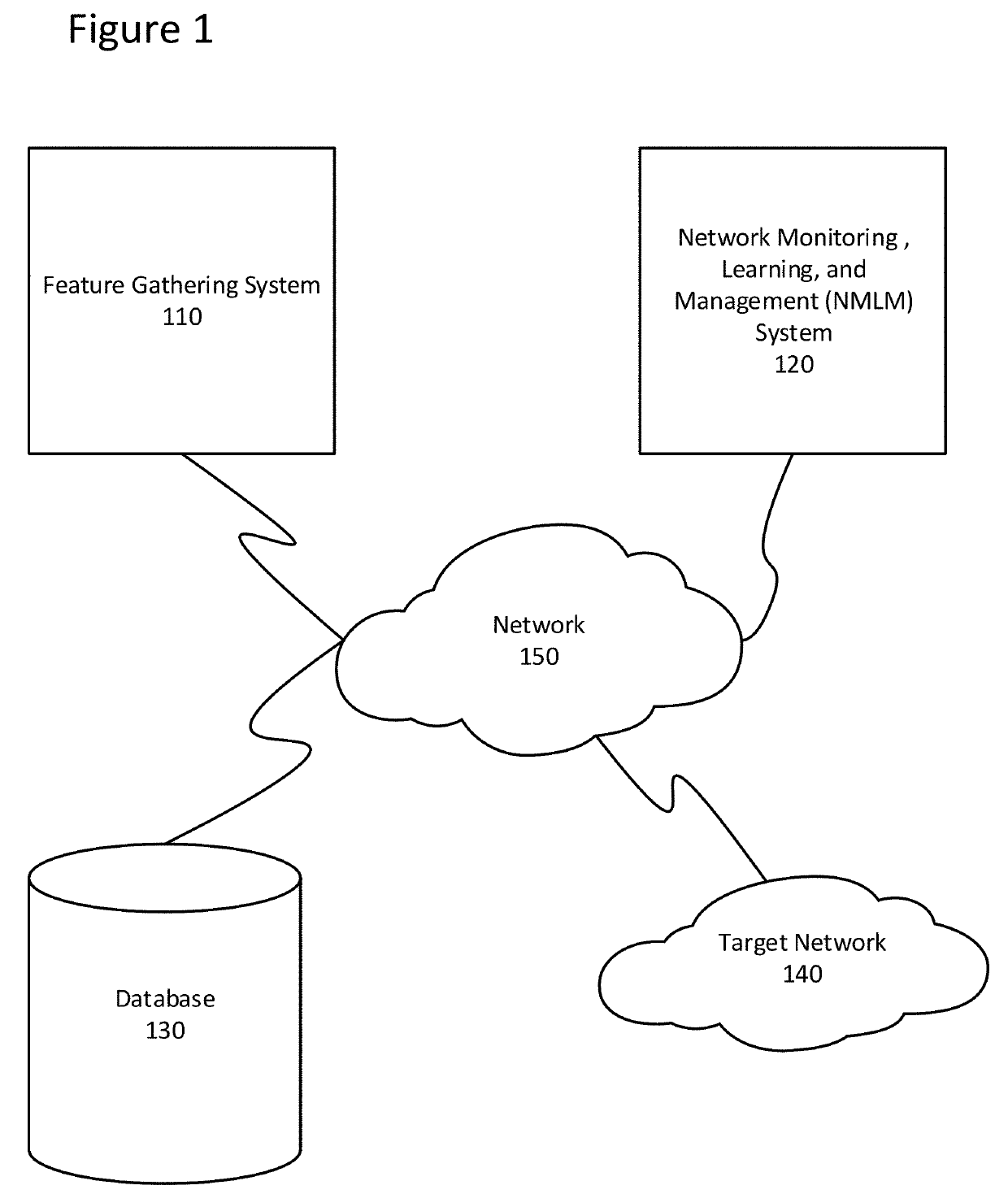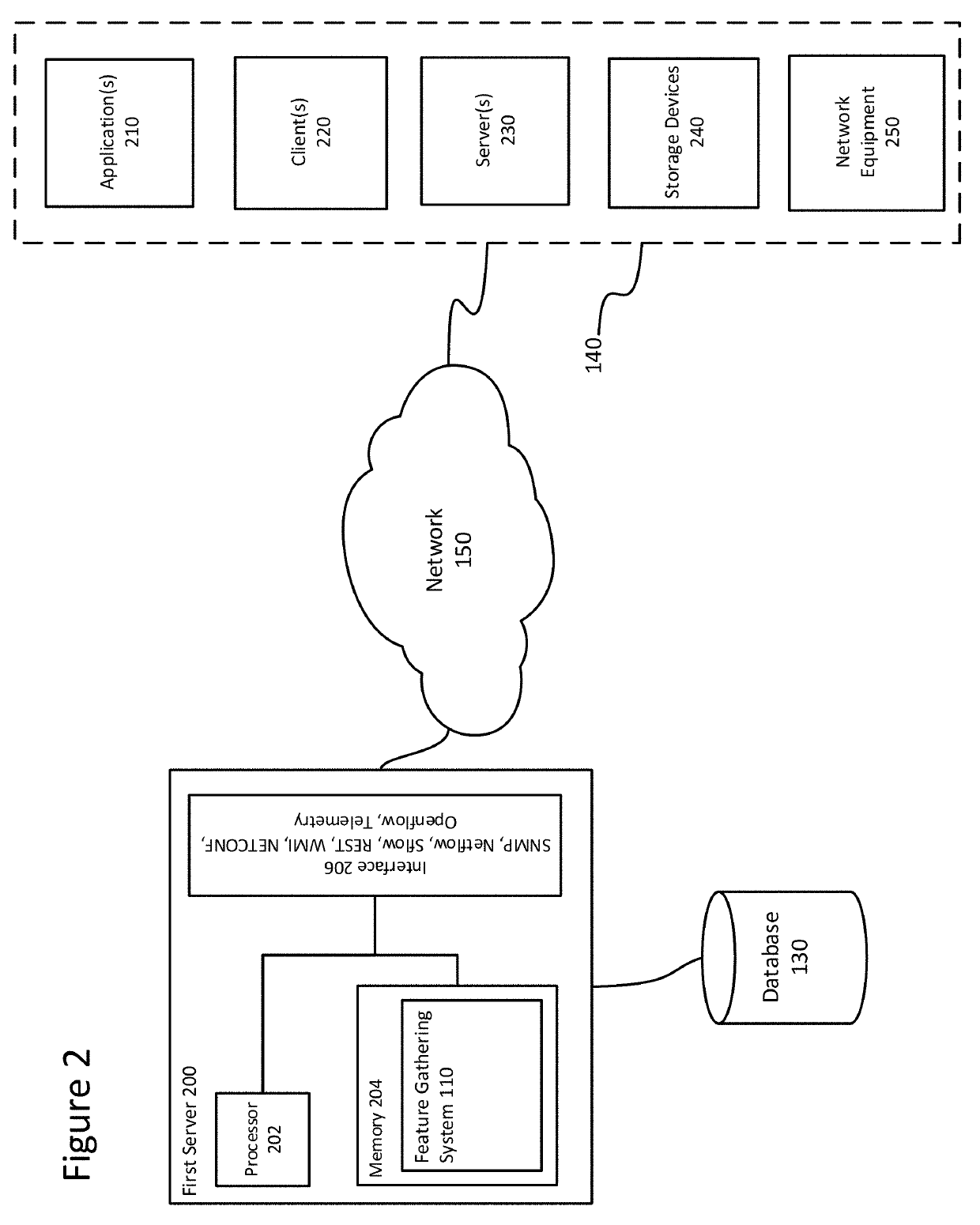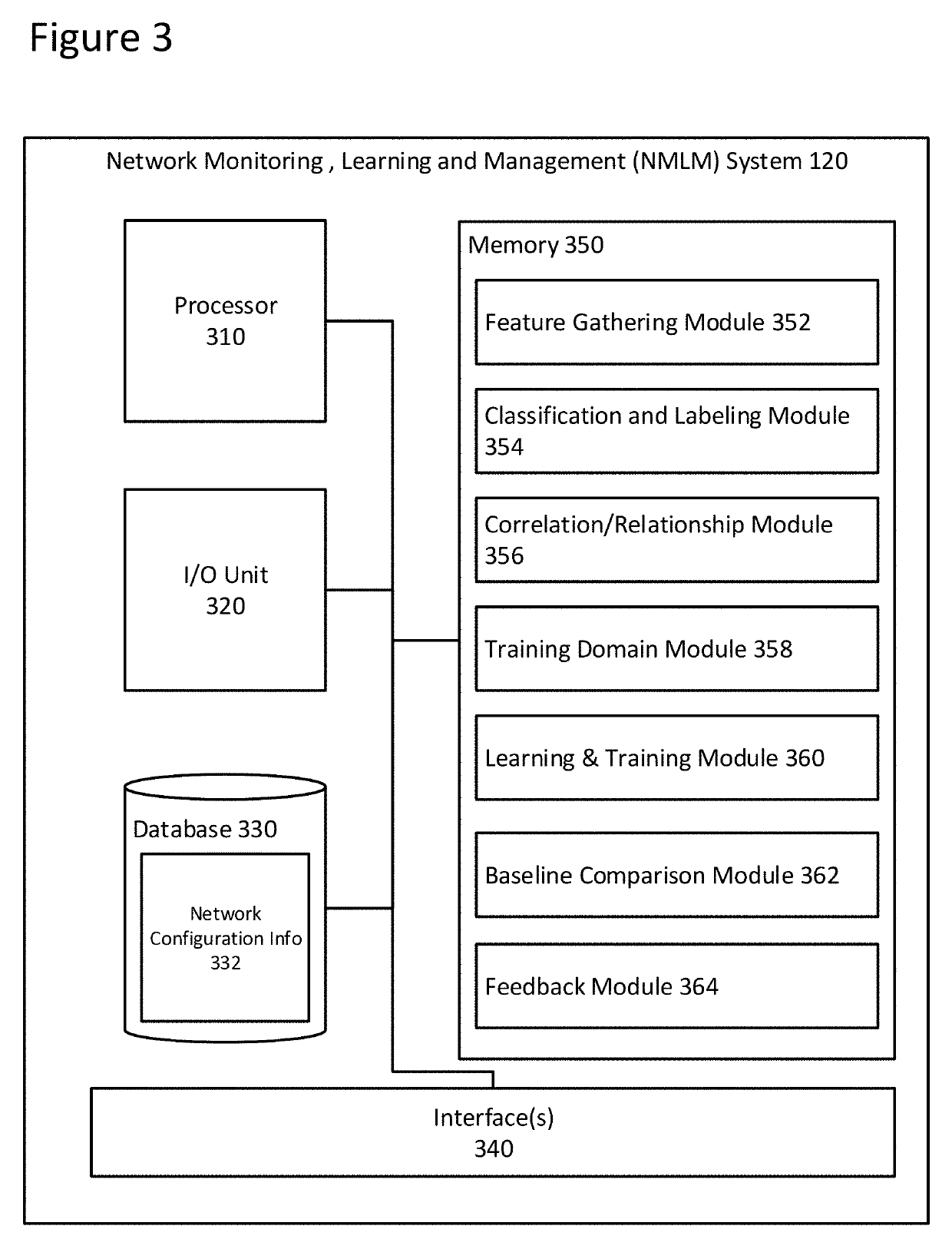Classification and Relationship Correlation Learning Engine for the Automated Management of Complex and Distributed Networks
- Summary
- Abstract
- Description
- Claims
- Application Information
AI Technical Summary
Benefits of technology
Problems solved by technology
Method used
Image
Examples
Embodiment Construction
[0027]The embodiments described herein with reference to the accompanying drawings, in which like reference numerals may refer to identical or functionally similar elements. Further, the terminology used herein is for the purpose of describing particular embodiments only and is not intended to be limiting of the disclosed embodiments. As used herein, the singular forms “a,”“an,” and “the” are included to include the plural forms as well, unless context clearly defines otherwise. It will be further understood that the terms “comprises” and / or “comprising,” when used in the specification, specify the presence of stated features, integers, steps, operations, elements, and / or components, but do not preclude the presence of one or more additional features, integers, steps, operations, elements, and / or groups thereof.
[0028]Unless otherwise defined, all terms (including technical and scientific terms) used herein shall be given their plain and ordinary meaning as understood by one of ordin...
PUM
 Login to View More
Login to View More Abstract
Description
Claims
Application Information
 Login to View More
Login to View More - R&D
- Intellectual Property
- Life Sciences
- Materials
- Tech Scout
- Unparalleled Data Quality
- Higher Quality Content
- 60% Fewer Hallucinations
Browse by: Latest US Patents, China's latest patents, Technical Efficacy Thesaurus, Application Domain, Technology Topic, Popular Technical Reports.
© 2025 PatSnap. All rights reserved.Legal|Privacy policy|Modern Slavery Act Transparency Statement|Sitemap|About US| Contact US: help@patsnap.com



